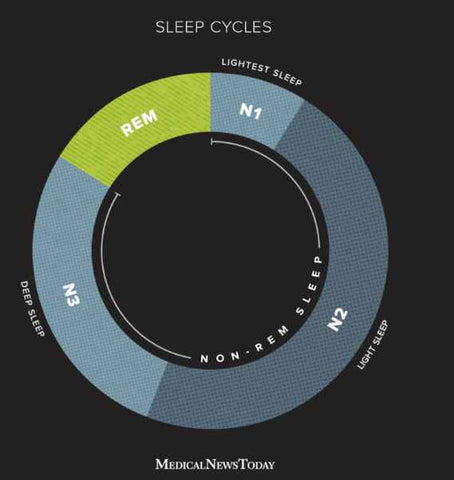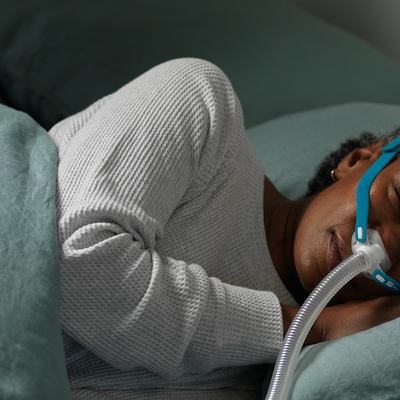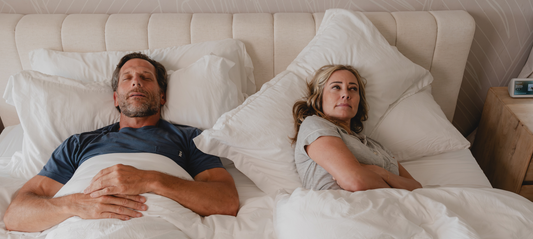Sleep isn’t just a restorative interval between your busy days. Instead, it's a complex, vital process that affects virtually every aspect of your physical and psychological well-being. For many, deep, rejuvenating sleep may sound like a distant dream—pardon the pun—owing to the high prevalence of sleep disorders. Among these conditions, sleep apnea is one of the most common, yet often overlooked sleep disorders.
The advent of at-home sleep test devices has revolutionized the approach to sleep health by providing a convenient way to screen for sleep apnea, as opposed to a complicated, in-lab polysomnography, or sleep study.
At the forefront of this revolution is the WatchPAT, a sleek wearable device that has empowered individuals to take charge of their sleep diagnostics. However, the power to monitor one's sleep health comes with the weighty responsibility of thoroughly interpreting the test results—a task that can seem daunting, if you’re not partnering with the right provider.
In this comprehensive guide, we will break down the science behind the WatchPAT home sleep test, walk you through the test preparation and your overnight experience, and, most importantly, help you understand and decipher the intricate web of data that comprises your sleep test results.
What is the WatchPAT and How Does It Work?
The WatchPAT is a pioneer of wrist-worn sleep diagnostic devices, standing out for its ease of use and high level of accuracy. Its proficient working mechanism revolves around the Peripheral Arterial Tone signal (PAT), which is an advanced technology assessed through a wrist-worn device that measures blood flow and deciphers the impact of respiratory events during sleep.
PAT Technology does away with the complexities of in-lab sleep studies, delivering simplicity and comfort to users without compromising the precision of diagnosis. As you slumber, the WatchPAT quietly and unobtrusively collects a wealth of information about your sleep architecture and the presence of apneic events, which can range from pauses in breathing, known as apneas, to under-breathing or slowed breathing, referred to as hypopneas. These data points are critical in assessing the quality of your sleep and any potential signs of sleep apnea.
The other metrics this at-home sleep device detects include:
-True Sleep Time: Differentiates between wake and sleep periods.
-Sleep Architecture: Classifies sleep stages (Light, Deep, REM) using PAT amplitude and pulse rate data.
- Oxygen Desaturation Index (ODI): Measures drops in blood oxygen levels during apnea events.

Before You Begin: Understanding the Basics of Sleep Health
Before venturing into the specifics of your sleep test results, it's crucial to lay a foundation for understanding the significance of healthy sleep. We spend about one-third of our lives sleeping, moving through various stages of sleep, each vital in its own right. From the rapid eye movement (REM) stage, where dreams occur and memory processing takes place, to deep sleep, essential for physical restoration, each stage contributes to a well-rounded sleeping experience.
Sleep disorders, such as insomnia, narcolepsy, and especially sleep apnea, of which approximately 936 million people suffer globally, can disrupt this delicate equilibrium, leading to serious health consequences. Sleep apnea, in particular, characterized by repeated cessation in breathing, can lead to oxygen deprivation, and fragmented sleep, and is often linked to an increased risk of cardiovascular diseases, diabetes, and other health issues. Individuals with untreated sleep apnea are up to four times more likely to suffer from stroke and three times more likely to have heart disease. Understanding these basic elements lays the groundwork for comprehending the implications of your WatchPAT test results.

Preparing for Your At-Home Sleep Test
The night you undertake your at home sleep apnea study can significantly influence the accuracy and robustness of the data. Simple steps, such as refraining from consuming alcohol or caffeinated beverages near bedtime, ensuring a comfortable sleep environment, and, of course, proper device placement, can ensure that your WatchPAT sleep study captures a representative sleep session.
It's essential to meticulously follow the setup process for your WatchPAT. This means securing the device as instructed, ensuring a snug but not constricting fit, and familiarizing yourself with the device's operation beforehand. Once the device is in place, all that's left is to lie back, relax, and breathe naturally as the WatchPAT diligently records your nocturnal activities.
Here’s more information on how to use the WatchPAT One from Itamar Medical:
When you start
- Make sure you have internet access, your phone, the WatchPAT® ONE device, and your assigned 4-digit PIN (personal identification number).
- Download the WatchPAT® ONE app to your mobile device from the Apple App Store or Google Play Store.
- Open the application and allow all necessary permissions.
Setting Up the Device:
- Take out the WatchPAT® ONE from its box.
- Insert an Alkaline AAA battery into the device.
- Remove any tight clothes, rings, watches, and other jewelry from your non-dominant hand.
- Enter your 4-digit PIN provided by your physician's office.
- Put the WatchPAT® ONE device on your non-dominant hand, ensuring it's neither too tight nor too loose.
Chest Sensor Placement (if applicable):
- If your device includes a chest sensor (snoring and body position sensor), direct the cable through your sleeve and out through the neck opening.
- Attach the sensor just below your sternal notch.
Finger Probe Placement:
- Place the probe on any finger of your non-dominant hand (except the thumb).
- Insert it so that the sticker marked "TOP" is positioned above the fingernail.
- Slowly pull off the TOP tab to remove it from the probe.
Final Steps Before Sleep:
- Ensure your phone is located no more than 15 feet (5 meters) from the WatchPAT® ONE device.
- Turn off other transmitting devices in the room (smartphones, smartwatches, headphones) to prevent interference.
- Connect your phone to a charger; it must remain plugged in throughout the night.
Begin Your Sleep Study:
- Click the "Start" button on the application to begin monitoring.

Remember that accurate results depend on proper setup and adherence to instructions. Follow these steps diligently for a successful at-home sleep test with the WatchPAT ONE device!
Reading Your WatchPAT Sleep Study Results
Post-test, the anticipation for the sleep apnea test results begins. The WatchPAT's data output comes in a form that's both comprehensive and detailed, presenting a range of information. Interpreting these results is a multi-faceted process that involves understanding not just the numbers but the context as well.
Data from the WatchPAT encompasses a range of parameters, including the Apnea-Hypopnea Index (AHI), which counts the number of respiratory events per hour of sleep, the Respiratory Disturbance Index (RDI), which accounts for additional respiratory disruptions, oxygen saturation, heart rate, and a breakdown of sleep stages.
Deciphering Key Terms and Scores
To paint a clearer picture, here's a closer look at some of the terms and metrics you'll encounter in your WatchPAT results:
Apnea-Hypopnea Index (AHI)
The AHI measures the average number of apneas and hypopneas per hour of sleep. A higher AHI can be an indicator of more severe sleep apnea.
Respiratory Disturbance Index (RDI)
Similar to the AHI, the RDI encompasses apneas, hypopneas, respiratory effort-related arousal (RERAs), and awakenings, offering a broader picture of the spectral landscape of your breathing during sleep.
Oxygen Saturation (SpO2)
This metric charts the trajectory of your oxygen levels across the night. A recurring decline in SpO2 can signify the prevalence of several respiratory disruptions.
Heart Rate (HR)
By monitoring fluctuations in heart rate, the WatchPAT can flag episodes of high heart rate that often coincide with disturbed sleep and apneic events.
Sleep Stages
WatchPAT's ability to differentiate between different sleep stages, including REM, light sleep, and deep sleep, allows for an examination of how sleep apnea may be influencing the quality and duration of each stage.
|
Term/Metric |
Explanation |
|
Apnea-Hypopnea Index (AHI) |
AHI counts how many times you stop breathing (apnea) or have shallow breathing (hypopnea) in one hour of sleep. A higher number means your sleep apnea is more severe. |
|
Respiratory Disturbance Index (RDI) |
RDI is like AHI but includes more things like slight breathing problems and times you wake up a little because you can't breathe well. It gives a fuller picture of your sleep breathing issues. |
|
Oxygen Saturation (SpO2) |
SpO2 measures how much oxygen your blood carries compared to the maximum it can carry. If this number goes down a lot while you sleep, it means you're not breathing well enough at times. |
|
Heart Rate (HR) |
Your heart rate changes when you sleep. The WatchPAT notices if your heart beats faster at times, which might happen if your sleep is disturbed or you're having trouble breathing. |
|
Sleep Stages |
The WatchPAT can tell which part of sleep you're in: REM (when you dream), light sleep, or deep sleep. It checks if sleep apnea affects how long you stay in each stage and the quality of your sleep. |
What to Do After You Get Your Results
The actionable steps following the receipt of your WatchPAT results can vary, depending on the severity of your diagnosis and individual health profile. If your results indicate a high AHI or suggest severe sleep apnea, it is important to seek professional guidance. This could range from a consultation with a sleep specialist to discuss treatment options, such as Continuous Positive Airway Pressure (CPAP) therapy, to implementing lifestyle changes designed to improve sleep quality. Lifestyle changes may include quitting smoking and drinking, as well as losing weight, which is known to exacerbate the presence of sleep apnea.
You don’t have to interpret your results alone. When you get your WatchPAT One through a reputable supplier, they will provide a sleep professional to guide you through the results and provide personalized recommendations aligning with your particular health trajectory.
Frequently Asked Questions
How accurate is the WatchPAT compared to an in-lab sleep study?The WatchPAT is recognized for its high accuracy in diagnosing sleep apnea, with studies showing it to be a reliable alternative to traditional in-lab sleep studies. However, it focuses primarily on diagnosing sleep apnea and may not detect other sleep disorders.
Can I move around or go to the bathroom during the night?Yes, you can move around or use the bathroom. The WatchPAT is designed to monitor your sleep throughout the night, and short interruptions should not affect the overall results. However, it's essential to ensure the device remains properly attached.
Will I feel uncomfortable sleeping with the WatchPAT device?While individual experiences vary, the WatchPAT is designed for comfort and minimal disruption to your sleep. It may take a short time to adjust to wearing the device, but most users report little to no discomfort.
What if I can't sleep during the test night?It's not uncommon to experience some difficulty falling asleep with a new device. However, the WatchPAT can still provide valuable data even if you sleep less than usual. If you're concerned about your sleep during the test, discuss this with your healthcare provider.
How do I know if the WatchPAT device is working correctly?The device has indicators to show that it's recording data. Before going to sleep, ensure these indicators are active as per the instruction manual. If you encounter any issues, contact the support team provided with your device.
When will I get my WatchPAT test results, and how will they be interpreted?Results are typically available within a few days after the test. Your healthcare provider will review and interpret the results for you, explaining the key metrics like AHI, RDI, and oxygen saturation, and what they mean for your sleep health.
What happens if my test indicates I have sleep apnea?If your results suggest sleep apnea, your healthcare provider will discuss the next steps, which may include lifestyle changes, using a CPAP machine, or exploring other treatment options tailored to your condition's severity.
Can I take the WatchPAT test more than once?Yes, in some cases, your healthcare provider may recommend repeating the test, especially if your sleep patterns might have changed, or if it's necessary to evaluate the effectiveness of a treatment.
Taking the next steps based on your results is vital. Whether it's consulting a sleep specialist, making lifestyle changes, or considering treatment options like CPAP therapy, each action you take is a stride toward better sleep and, consequently, better health.
Take an At-Home SLeep Apnea Test with Lofta
If you believe you may be suffering from mild or moderate sleep apnea, it may be time to take an at-home sleep test using the WatchPAT One, or consulting with your healthcare professional with regards to what your next steps may be.
Have you already taken a home sleep test?
If your at-home sleep test results raise concerns, don't hesitate to consult with healthcare professionals who can provide further analysis and guidance or contact the friendly LoftaCare coaches to assist you today. Remember, addressing sleep issues early can make a significant difference in your quality of life.
















